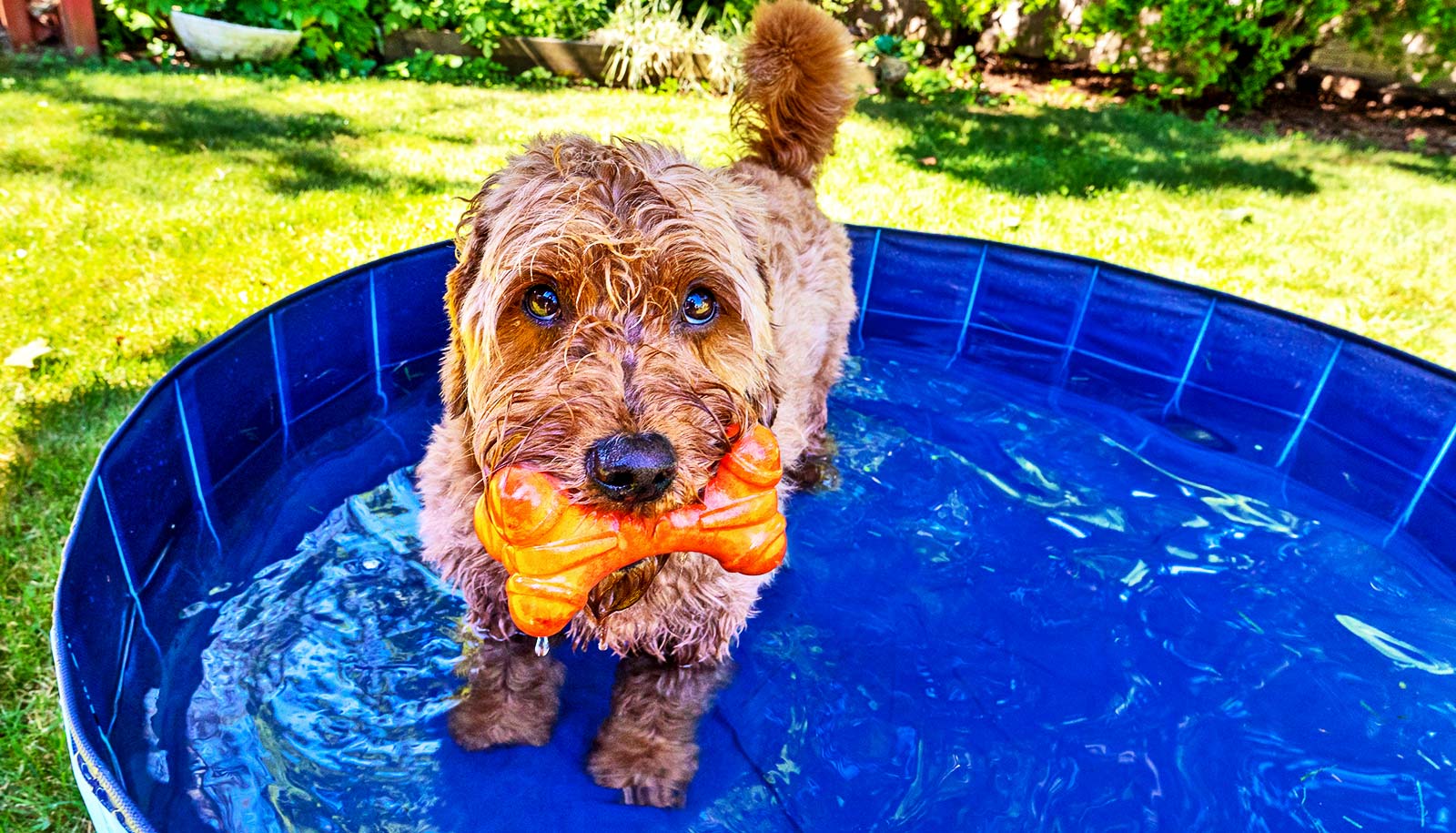They might be the so-called “dog days” of summer, but in areas that experience extreme heat, summertime is not the time to be out and about with your four-legged friends.
It’s Saturday afternoon. Your weather app reads 105 degrees. Your dog is staring at you expectantly, hoping for a walk. What do you do?
Step away from the leash, says Sarah Carotenuto, an assistant professor of practice in the University of Arizona College of Veterinary Medicine.
“Dogs don’t sweat like we do. They have very limited ability to dissipate heat, so they’re more prone to overheating than we are,” says Carotenuto, who has worked as an emergency vet in Arizona for 15 years. “Certainly, we wouldn’t go out in a fur coat and exercise, but that’s exactly what we’d be asking them to do.”
When the temperature rises, so does the risk for heatstroke, which can be extremely dangerous for dogs.
“Heat stroke is like cooking an egg,” Carotenuto says. “Once the body temperature gets over 109 degrees, it’s like an egg white: You put it in the pan and it cooks and becomes white. And it’s really hard, if not impossible, to get that egg white to go back to the liquid sate.
“That’s what happens in the body when dogs get overheated to the point of 109; their proteins basically start to cook. It’s very, very, very dangerous, and it’s super hard to have dogs come back from that.”
But just because it’s hot outside doesn’t mean your dog has to be cooped up and bored all day. After all, exercise is beneficial for your dog’s mental and physical health.
“Things to engage the mind and engage the body are good for all species,” Carotenuto says. “Without that, we may see dogs develop repetitive behaviors, similar to zoo animals pacing back and forth in their enclosures, or destructive behaviors, like chewing the couch or pawing at the wall or barking at the door incessantly and driving the neighbors crazy.
“It’s really important to engage both the mind and the body to prevent those sort of behaviors from developing.”
Here, Carotenuto offers six tips for making sure your dog is keeping cool while getting safe exercise and mental stimulation in the summer months.
1. Sign up for summer dog camp
In many communities, canine day care facilities offer indoor playgrounds where pups can run around and interact with other dogs. Some even have swimming pools and indoor agility courses. Dog owners can pay to drop off their pooches for a few hours of supervised, air-conditioned exercise. Carotenuto specifically recommends facilities that separate dogs by size.
2. Make a splash
Backyard sprinklers or kiddie pools can provide lots of fun for water-loving pups. A regular garden hose can work, too, with one caveat: Some dogs like to snap at the water, which can result in them ingesting too much. So, just be cautious, Carotenuto says.
If you have a full-size backyard pool and your dog loves to swim, that can be a great exercise option as well. But not all dogs are swimmers, so make sure you know your dog’s abilities before allowing your pup in the pool. And just like kids, dogs should never be left unsupervised in or around the water, Carotenuto says. It’s also important to make sure your dog has an easy way to climb in and out of the pool. For added safety, doggie life vests in various sizes can be purchased from pet retailers.
3. ‘Think like a zookeeper’ with creative indoor games
Tossing a ball indoors, investing in indoor puzzle toys for dogs, or playing hide-and-seek with favorite toys or treats are some simple and fun options to engage dogs mentally and physically. Many dogs, like their feline counterparts, also like chasing laser pointers, Carotenuto says. She encourages people to “think like a zookeeper” to come up with creative indoor activities.
“Zookeepers deal with this a lot, where animals become used to their environment and very bored with the same old things,” she says. “So, you can think through enrichment activities. Can I give them something to chew, or is there something they could hunt for, like a favorite toy? You could move it throughout the house and have them find it, kind of like ‘Elf on the Shelf’ but for dogs.”
4. If you do go outside, time walks appropriately
If you do decide to walk your dog, the very early morning and late evening hours are generally the safest time to do so, Carotenuto says.
“There’s a reason coyotes hunt at dawn and dusk, because that’s when it’s feasible to do it,” she says.
A good way to determine whether it’s too hot for a walk: Test the pavement with your own hand.
“If you can’t put your hand down on the pavement for three to five seconds, you shouldn’t walk your dog on it.”
5. Invest in proper footwear
Speaking of hot pavement, burns on paw pads are among the most common heat-related injuries sustained by dogs, Carotenuto says.
“On average, the pavement is 40 to 60 degrees hotter than the ambient air temperature, so if the temperature is 100 degrees, the pavement is going to be 160 degrees,” Carotenuto says. “Pads are made for walking, but not on that heat. When the paw pads burn, they slough off. Imagine walking around on raw feet that have no protection; it’s excruciatingly painful.”
If there’s no way to avoid having your dog on the pavement during the day, protective footwear is a must. Slip-on silicone booties, which also can be found at pet retailers, are real paw savers. And while it sometimes takes dogs a while to adjust to wearing them, they’ll get used to it.
6. Know your dog
While extreme heat isn’t safe for any dog, some breeds are more sensitive than others.
“There are a couple of breeds that you have to be really careful with during the summer, and those are flat-faced dogs—anything like a pug, a Shih Tzu, a French bulldog, an English bulldog—all of those dogs have even more trouble dissipating heat because of their anatomy,” Carotenuto says. “Arctic breeds—basically anything that was meant to be a sled dog—also tend to have a bit more trouble because they have a really thick undercoat that helps retain heat.”
You should research the specific breed of your dog to better understand how they might be affected, Carotenuto says.
Source: University of Arizona


